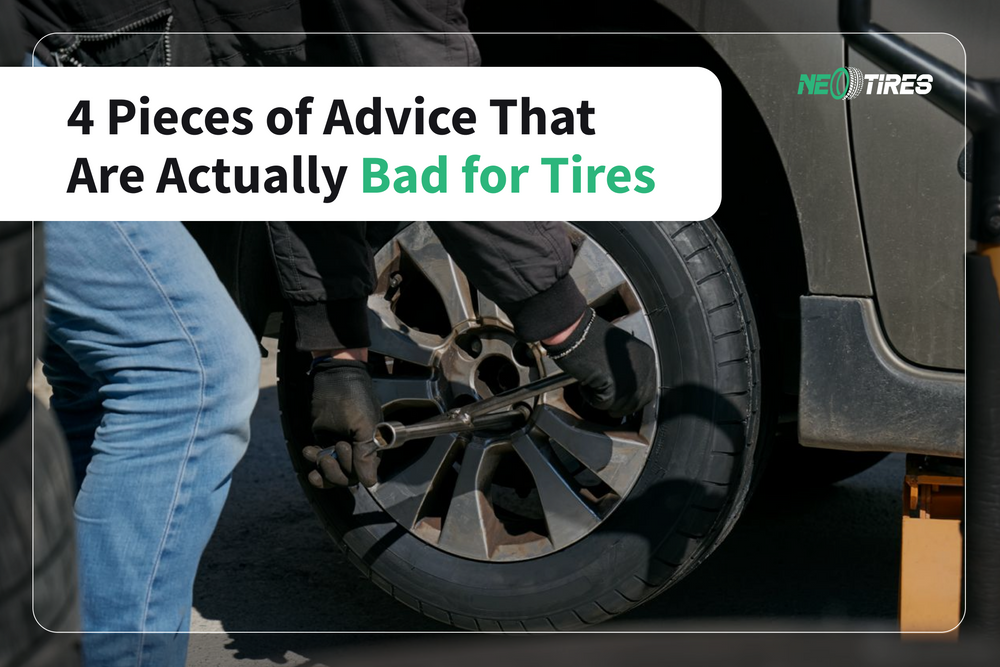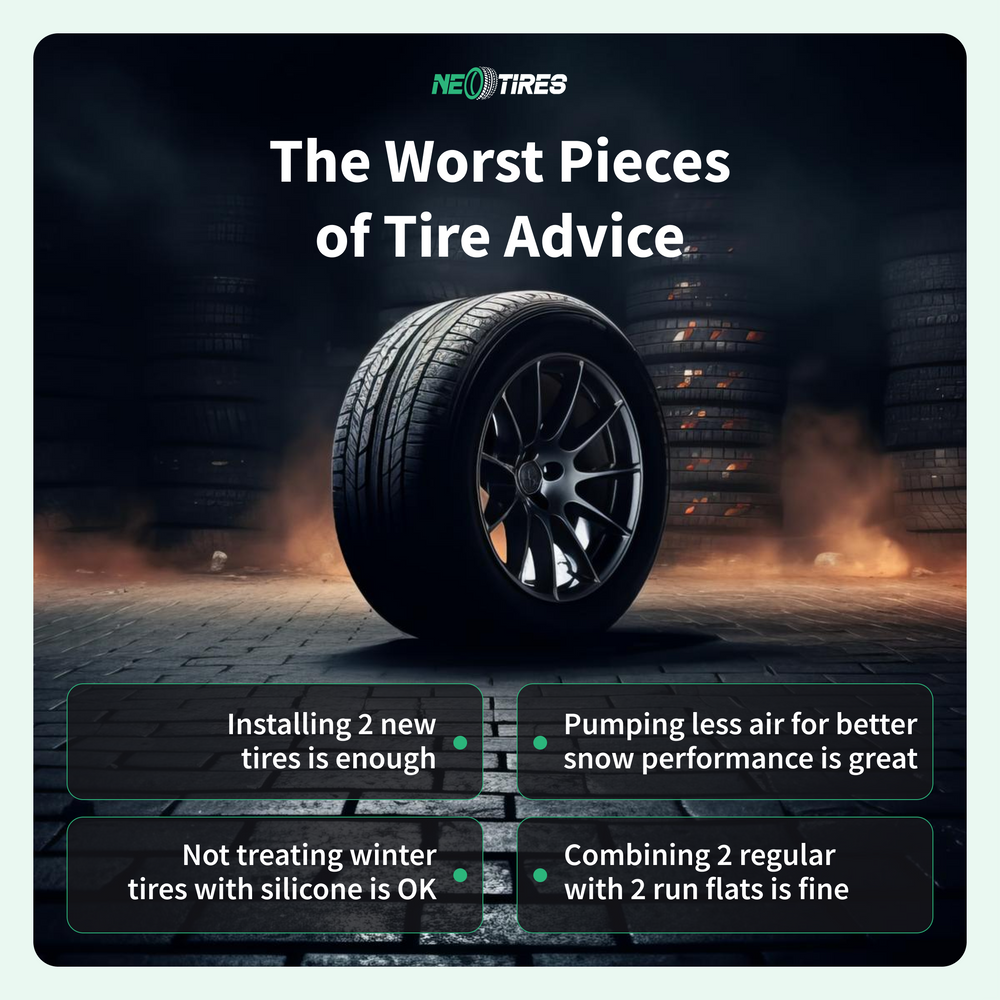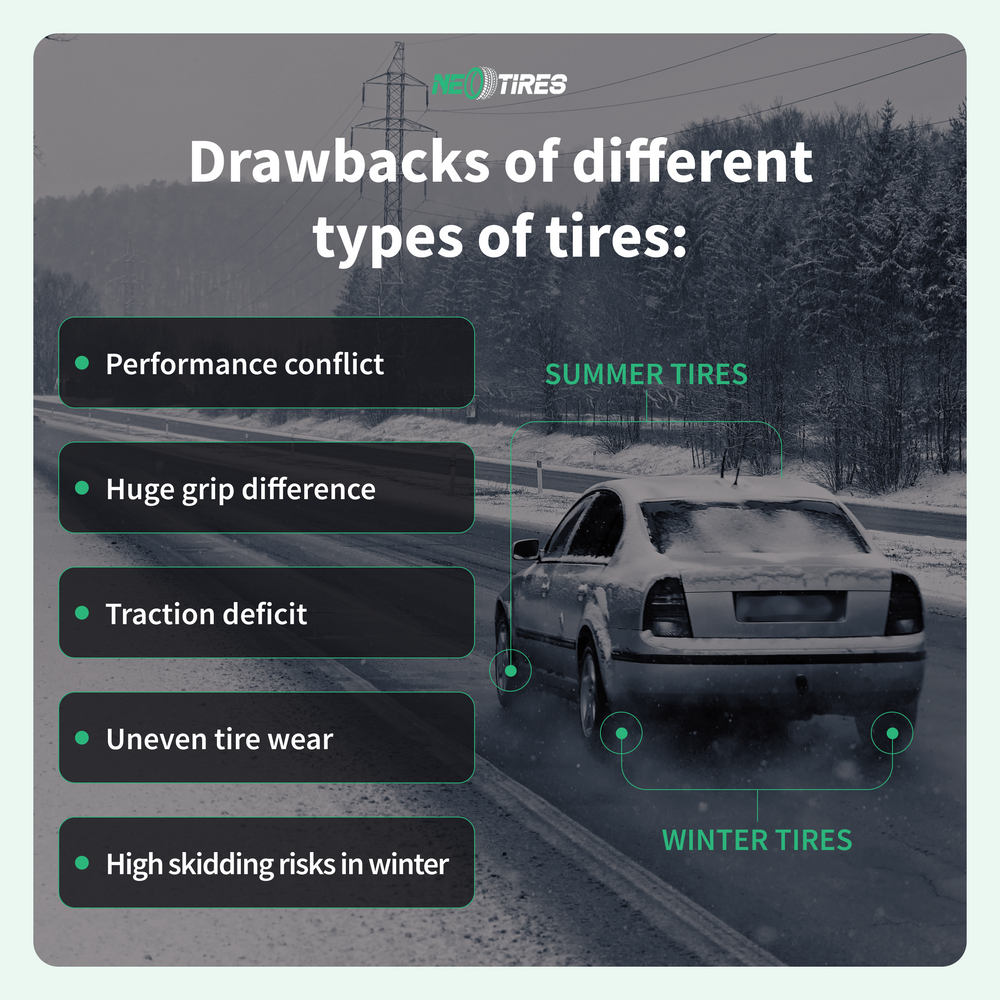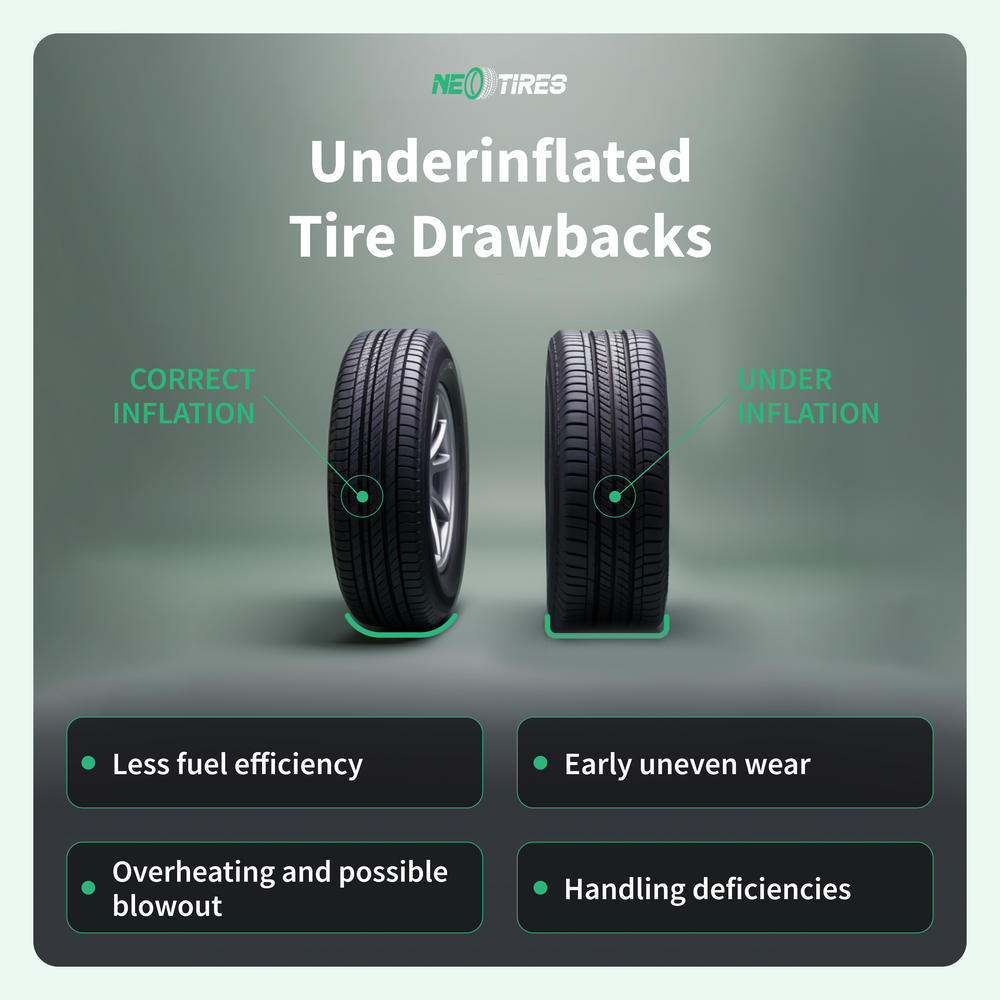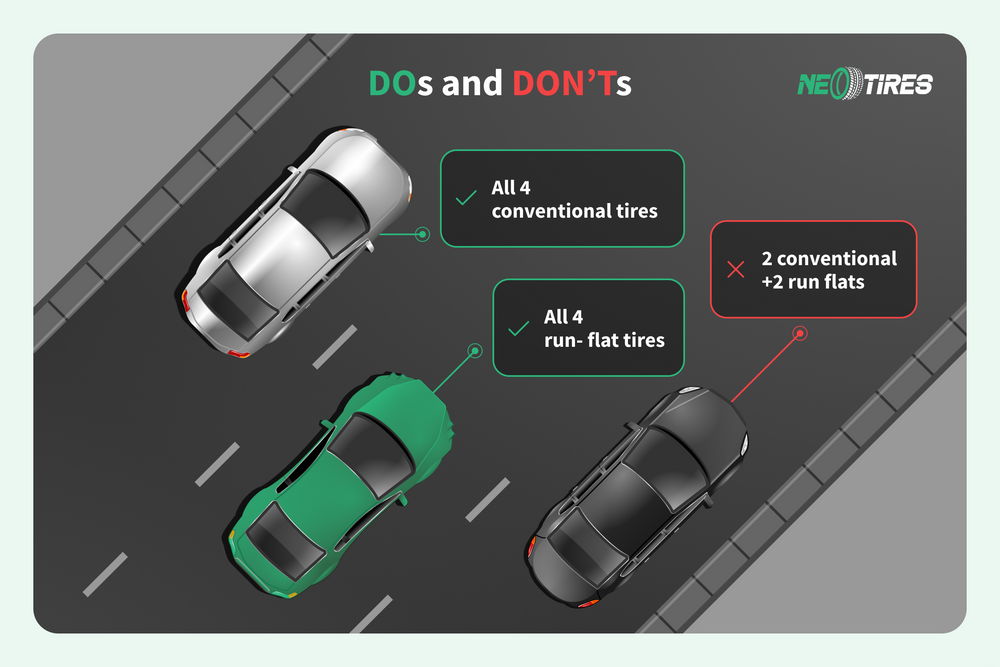Let's talk about the worst tire advice! The topic is critical both for the drivers' safety and for the tires' "health"! Unfortunately, many sources give wrong advice regarding the correct use of tires. Or, it may be that the neighbor, fellow, or some "know-it-all" guy recommends some tips that he is sure are the best. But what would a mechanic say if he knew you were applying these pieces of advice?
Here are 4 of the most common mistakes that drivers overlook:
Let's take them one by one and see what is wrong and how we can correct things.
Installing Only 2 New Tires
Throughout our experience in the field of tires, we have seen various scenarios. Some drivers mount 2 all-season and 2 summer tires. Other motorists drive on 2 summer tires and only add 2 winter tires in the false hope that this is enough for traction and performance in severe winter conditions. Any of these or other combinations are not only wrong but also extremely dangerous.
The combination of different types of tires is, at least, detrimental to the handling of the vehicle. Secondly, it goes against traffic rules, especially if it is a question of combining winter and summer tires on the same vehicle. Thirdly, the vehicle will only slide chaotically on icy and snowy surfaces, endangering the safety of the drivers.
Many drivers mistakenly believe that such a combination makes sense if the different tires are mounted on the different axles (that is, 2 summer tires on one axle and 2 winter tires on another axle). However, regardless of the mounting axis, skidding is absolutely inevitable because the difference in traction and grip is huge.
The only acceptable combination is the SAME TYPE of tires but with different treadwear. That is, drivers are allowed to pair 2 slightly worn tires with 2 new ones as long as they are of the same type (winter/all-season/summer, etc...). In this case, specialists recommend that slightly worn tires be mounted on the rear and the new ones on the front axle. The recommendation is valid regardless of the type of traction of the vehicle.
With these in mind, we recommend not to save on tires to the detriment of driving safety. Opt for 4 tires of the same type according to the season. This increases the level of driving safety and ensures confident performance in specific weather conditions.
Ignoring Tire Treatment With Silicone or Blackener in Winter
Many drivers do the right thing in mounting winter-dedicated tires once the temperature drops. Indeed, winter tires are the best for the cold season, especially if winter comes with severe snow and ice. However, using winter tires is not enough in wintry conditions. You have to know how to treat them right.
The point is that winter roads are constantly treated with salt, deicing material, or other chemical agents to reduce vehicle slippage in severe snow and ice. These components indeed help the balance and stability of vehicles. However, they are somewhat detrimental to the tire material.
Even if it is not very noticeable, these chemical substances stick to the rubber, gradually degrading its structure. The effect will not appear right away. And we couldn't even tell you how and when exactly this degradation will take place. But if your goal is to maintain the health of winter tires, silicone or blackener treatment like those found on Amazon is an optimal solution.
However, you have to be careful even with these protective materials. Applying silicone or blackener too often is also not favorable for the health of the tires. I mean, they are quite effective, but they could react with the chemical agents on the road. With this in mind, you must apply these substances with caution without abusing the amount and frequency of use. You know, less is more sometimes.
Reducing Tire Pressure For Better Winter Performance
Oh, this mistake is so common! Tire pressure is so often misunderstood that every second driver can tell you dozens of erroneous myths about it!
So, a lot of drivers use to underinflate their tires during the winter to increase grip on snowy roads. An underinflated tire puts more rubber on the road surface and grips better. At least, that's the general idea that most drivers believe in.
This practice is actually taken from off-roading. Driving on underinflated tires in off-road conditions makes sense because:
1. off-road driving usually takes place at low speed
2. off-road tires are adapted for these specific conditions. They have several reinforcing layers inside. Thus, reducing tire pressure in them is not a big deal because the internal construction is quite solid. In addition, some less PSI increases the contact patch, which is favorable for confident traction in off-road conditions.
The problem is that drivers are guided by the same principle with regular on-road tires as well. Believing that less pressure equals more grip, they consciously pump less air into regular tires. However, they do not take into account that the internal structure of the tires is not as reinforced as that of an off-road-specialized tire. So, underinflation affects the internal structure of the tire, increases fuel consumption, and accelerates early tire wear.
The conclusion is that drivers must maintain the pressure recommended by the manufacturer. Tire makers consider all weather and road conditions when building purpose-oriented tires. Winter tires are specially built to provide confident grip and traction. It is not necessary to reduce the recommended pressure to benefit from these features. Keep the pressure at an optimal level so as not to generate unwanted side effects.
Combining Regular Tires with Run Flats
Another incorrect and unsafe practice is combining regular tires with run-flat ones. Run flats are tires that remain in shape after a possible puncture and subsequent air leakage. That is, the motorist can keep driving with a deflated tire until a technical service center without having to replace the damaged tire at the side of the road. The point is that run-flat tires have a reinforced carcass inside that makes them not so dependent on the pressure in them.
Run flats are usually more expensive than regular tires. Probably, for this reason, some drivers use to combine run flats with regular tires. Regardless of the intention, this combination is absolutely irrational for several reasons. The construction of run-flat tires differs from that of conventional tires. Combining them inevitably leads to a performance conflict, traction difference, and early wear.
Bottom Line
Please be careful how you use your tires. These represent the bridge between the vehicle and the road. They are responsible for driving safety in various conditions. Don't neglect their proper use and maintenance. This will help you save money, prolong their serviceability period, and increase your level of safety behind the wheel.
Why Trust Us?
NeoTires already has a history of over 5 years in tire deals and technical assistance. Our team members each have over 10 years of experience in the field of tires. We have expert mechanics, professional testers, and top-notch content writers who work tirelessly to provide high-quality services, information, and products.
We take our work and business seriously and we focus on making sure that every reader and customer knows as much as possible about tires, their use, and safety tips to ensure safe and efficient driving. For this, we carefully evaluate the tires, we collaborate with partners with vast experience in the automotive industry, as well as we are guided by official sources and statistics to be a source of truthful and validated information. Happy to share with you that we have already assisted thousands of drivers across the US who praise our services and products. Feel free to join them!




